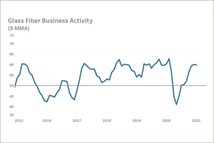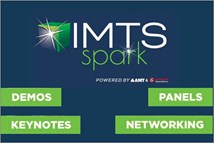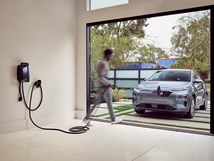ZF, Nvidia Team Up on Level 4 Autonomous Car Computer
ZF Friedrichshafen AG says its new ProAI RoboThink central control unit will be the most powerful in-vehicle supercomputer aimed at Level 4 autonomous driving and mobility-as-a-service applications.
ZF Friedrichshafen AG says its new ProAI RoboThink central control unit will be the most powerful in-vehicle supercomputer aimed at Level 4 autonomous driving and mobility-as-a-service applications.
Developed in conjunction with chipmaker Nvidia Corp., the RoboThink is capable of more than 150 trillion calculation operations per second (TOPS)—equivalent to about 120 high-end smartphones. The system’s modular design allows as many as four units to be teamed together for a total 600 TOPS.

With the RoboThink (right), ZF has significantly improved processing power over the first-generation ProAI (rated at 1 TOPS) system that the supplier announced two years ago. That was followed last year by the Gen2 and Gen3 systems that provide as much as 25 and 90 TOPS, respectively. In addition to the higher output, RoboThink comes with its own graphics processor.
ZF plans to offer all four controllers (pictured below) simultaneously, targeting different advanced driver assist and autonomous vehicle applications. The Gen1 system is aimed at current ADAS technologies and is compatible with all 2022 NCAP testing standards, according to the supplier. Production starts this year for an agricultural application.
Gen2 is designed to handle partially and highly automated Level 2 and 3 applications. The first passenger car application for the controller is expected to bow in 2024.
ZF says the Gen3 system can combine several chips on as many as three performance boards to enable Level 4 driving. The controller will launch later this year in ZF’s e.Go Mover automated shuttle, which will be tested in pilot programs in Germany and France in 2020.

ProAI RoboThink, with scalable computing power and its own graphics processor, targets Level 4/5 autonomous driving, ride-hailing, automated payments and other telematic features. ZF notes that mobility service applications likely will require more computing power than that required by a fully automated passenger itself.
ZF estimates a RoboThink module will cost 10-15 times more than a Gen1 controller. The company predicts there will be at least 1.5 million Level 4 robo-taxis on the road worldwide within five years.
Nvidia currently provides the software for all of the controllers except the Gen3 unit, which uses a Xilinx system-on-a-chip platform. But ZF says all of the devices can be adapted to work with different software suppliers.RELATED CONTENT
-
On Fuel Cells, Battery Enclosures, and Lucid Air
A skateboard for fuel cells, building a better battery enclosure, what ADAS does, a big engine for boats, the curious case of lean production, what drivers think, and why Lucid is remarkable
-
Cobots: 14 Things You Need to Know
What jobs do cobots do well? How is a cobot programmed? What’s the ROI? We asked these questions and more to four of the leading suppliers of cobots.
-
When Automated Production Turning is the Low-Cost Option
For the right parts, or families of parts, an automated CNC turning cell is simply the least expensive way to produce high-quality parts. Here’s why.








